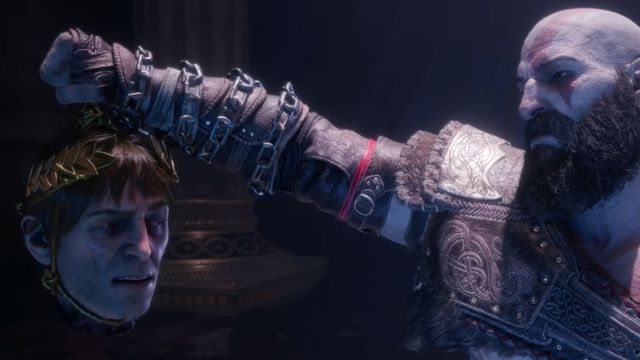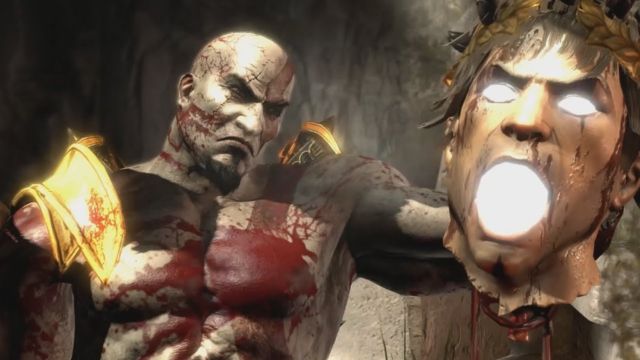God of War Ragnarok, Valhalla’s free roguelite DLC is more than simply an add-on mode; it’s an epilogue to the main game’s plot, in which Kratos faces his past as the Olympian god of war head-on. Kratos reunites with an apparition of Helios, or more precisely, Helios’ severed head, in this new chapter.
Throughout Valhalla’s constantly changing landscapes, Mimir’s head is periodically swapped out by Helios’, who heckles his killer while Kratos negotiates recollections of his past. Valhalla doesn’t specifically outline the incident from God of War 3 and its background, despite references to Helios’ beheading and Kratos’ reasons for carrying it out.
Helios, an Olympian god derived from the Titans Hyperion and Theia, is the embodiment of the Sun in Greek mythology. As the Sun, Helios has a great deal of power and influence among the Olympians. He is all-seeing, just as the evil Odin in God of War Ragnarok.
Despite having a significant role in only two of the original six God of War games, Helios is commonly seen alongside the most notable deities of Mount Olympus, such as Hades, Poseidon, and Zeus. The fact that Helios was killed by Kratos has implications for both the gameplay and the plot of God of War Ragnarok: Valhalla.
What Was Kratos’ Reason for Killing Helios in God of War 3?
Their acquaintance starts in God of War: Chains of Olympus, even though Helios dies during Kratos’ rampage across Mount Olympus in God of War 3. The Titan, Atlas, kidnaps Helios and takes him to the Underworld in the PlayStation Portable game.
Atlas wants to use the power of the Sun god to destroy the Pillar of the World, destroying Mount Olympus and the rest of the world, and retaliating against the Olympians for condemning him to an eternity of torture in Tartarus.
Kratos, who condemned the Titan to his traditional job of holding the globe himself, would finally save Helios by chaining Atlas to the Pillar of the globe.
Helios is one of the Olympians protecting Mount Olympus from an attack by Kratos and the Titans in God of War 3, which takes place far later in the chronology of the God of War series. Helios uses a flying chariot to keep the Titans at bay.
When Kratos meets the Sun god after destroying the chariot, Helios begs Kratos to spare his life once more, offering to pay back the debt and attempting to persuade Kratos that his death will not aid Kratos’ retaliation against Zeus.
In God of War 3, players can use the head as an item to locate hidden entrances and boxes, light up dark places, and blind adversaries. Kratos concludes the conversation by tearing Helios’ head off with his bare hands.
Why Helios Reappears in God of War Ragnarök: Valhalla?

Basically, Helios works best within the context of Ragnarok because of his decapitation, which sets him apart from other figures in the Greek saga of God of War. Since Kratos already bears Mimir’s head, it makes sense to switch it out for Helios’. Moreover, Helios is arguably the most suitable Olympian to return for Valhalla’s narrative needs.
Despite his hidden agenda, Kratos had previously rescued Helios in Chains of Olympus. Helios doesn’t even have a boss encounter in God of War 3; instead, he is ruthlessly and unceremoniously killed by Kratos after being injured by his crashing chariot and pleading for his life.
The Sun god is a vivid reminder of the collateral damage caused by Kratos’ retaliation and an embodiment of his once-insatiable anger, even though Helios’ head did serve Kratos’ goals.
When Helios is killed, Greece is plunged into endless darkness; when Poseidon is killed, massive floods are released; when Hades is killed, souls from the Underwold are freed; when Hermes is killed, a disease is released; and when Hera is killed, all Greek vegetation is eradicated.
Kratos, the god of war on Mount Olympus, not only slaughtered his brother gods in God of War 3, but he also planned a genocide against humans.
God of War Ragnarok: In Valhalla, Kratos confronts his guilt head-on, which surfaced as Helios and the Sun god’s unpaid due.
By assisting Kratos in facing his past, the debt can be settled. Kratos hardly ever confronts his previous deeds directly, even though his persona in the two most recent God of War games is heavily impacted by the earlier games.
Freya now wants Kratos to assume the role of the Norse god of war in God of War Ragnarok, thus Kratos has to deal with his final time in Valhalla holding such a title.
For more information on Kratos’ journey in Valhalla’s roguelite DLC and the complicated theories behind his meeting with Helios, vist Editorials24. Follow along with the latest DLC for God of War Ragnarok and see how this epic story is continuously evolving in incredible ways!
